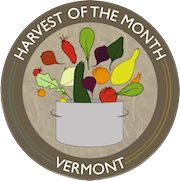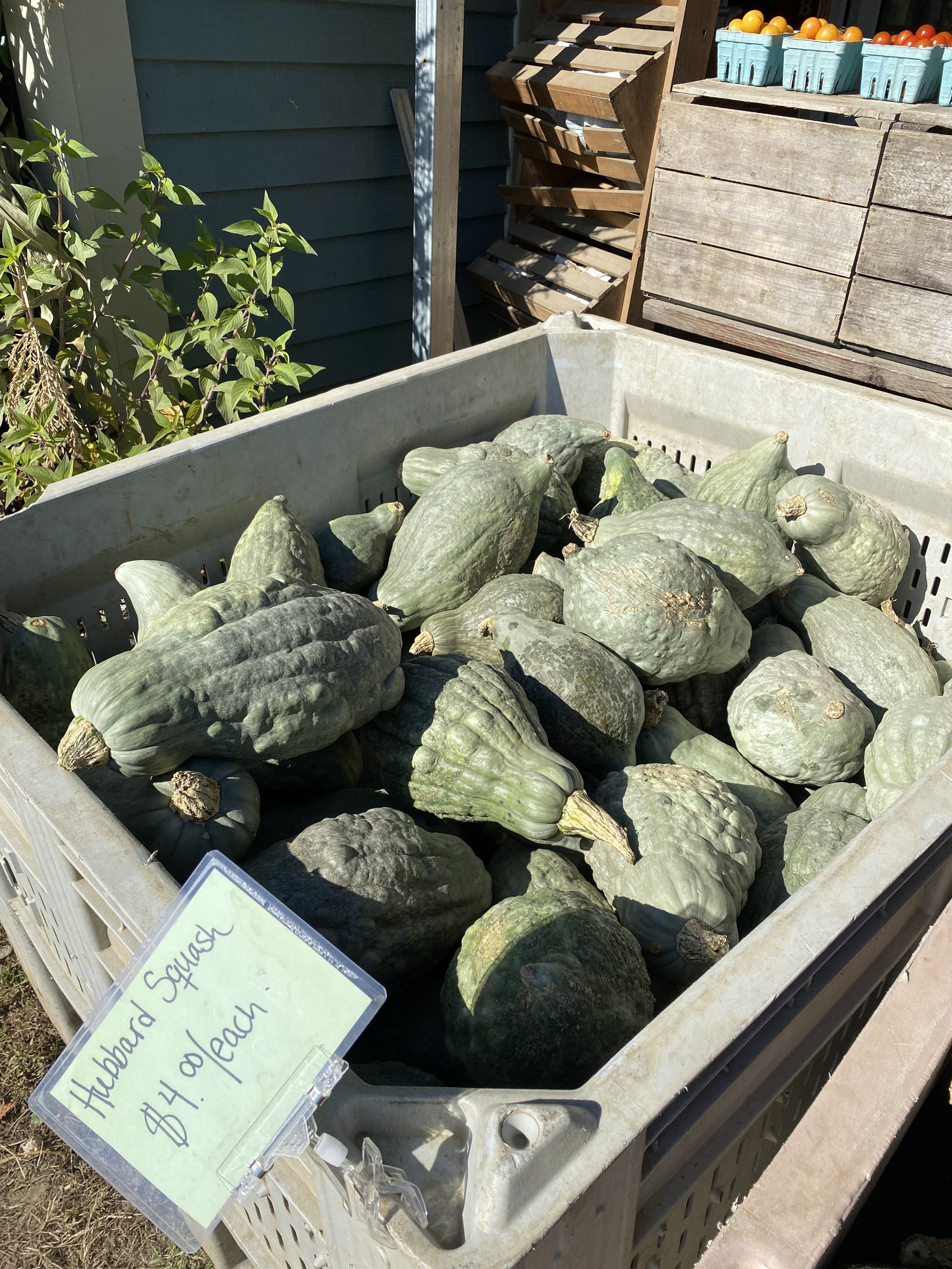Gifts For the Future at Pete's Stand in Walpole
Pumpkins on display in front of the Pete’s Stand farmstand in Walpole, NH.
Within a great bounty of overflowing squash bins, active growing fields and a fully stocked farmstand with all you could desire, children play hide-and-seek with each other, using piles of pumpkins as cover. Overlooking his family third-generation vegetable farm in Walpole, NH, John Janiszyn steadily drives stakes into the fertile floodplain to map out new greenhouses, while his wife Teresa, manages the bustling farmstand, busy with customers.
Garden carts help customers haul away their massive pumpkins, which have recently become their top seller. “It used to be squash, I used to grow and move a lot of squash. That was back when people would buy it by the bushel,” John recounts.
“People used to buy squash for the winter along with their apples, but now that’s changed.” He shares as we tour the back fields, countless rows stretch out in a gentle meandering slope down to the banks of the Connecticut river.
“I don’t know if it’s lack of space, energy, or know-how to store them. Maybe people cook at home less. It feels like a generational shift.” Every corner we turn, more copious bins of squash line the packing house behind the farm stand, ready to be eaten.
“Plenty of sales went through the Windham NorthEast Supervisory Union Meals Program. In the summer, that’s always a big one.” Teresa recounts. Pete’s Stand’s fresh produce was included in countless paper bags alongside a plethora of local goodies destined to support families throughout the summer recess.
Their admiration for this program extends into the school year with the Farm-to-School work being done in school gardens, classroom rooms and cafeterias. Recalling a recent conversation with Harley Sterling, the Food Service Director for WNESU, Teresa notes how younger generations don’t have the taught skill of food resourcefulness—the ability to “set up a menu for the week, with having to go out and buy groceries for every meal.” This skill, more prevalent with generations touched by the Great Depression, has faded with time resulting in higher grocery bills and greater food waste. Chiming in with the type of one liners that grow like heirlooms on this farm, John shares: “My grandmother could make a soup out of the spirit of a chicken.” Utilizing every part of a harvest, or small things like canning and proper pantry storage, can make a huge difference in the price per meal families pay. To help with that effort, their website offers many tips and recipes to help reinvigorate this skill set in our society and to help keep their local communities fed.
Additionally, in an effort to spread their harvest to as many families as possible, they also make considerable donations to Willing Hands serving both sides of the upper valley, Our Place in Bellows Falls and The Community Kitchen in Keene. Despite their generous donations and wholesale orders with local schools, Pete’s Stand is still full to the brim with an assortment of Squash,offered at some of the best prices around: Blue hubbard, buttercup, butternut, delicata, and of course pumpkins.
The mountains of squash and other produce are a welcome sight this year at Pete’s Stand after the previous year's crops were largely decimated by a significant flood that covered one of their lower fields in feet of water. In July of 2023, flood waters jumped the bank, soaking a field just planted with thousands of tiny squash seedlings. John recalls, “from our kayaks they could look down through the water to see tiny squash seedlings waving underwater. It was a tough sight; once they’re flooded, you can’t harvest them even if they survive.”
“Last year, we put a lot of our crops on that low field—squash, cucumbers, carrots, beets, lettuce—and it impacted the whole season.” When asked how they are preparing for future climate catastrophes after bouncing back from this one, John recounts with a smile: “Don’t put all your eggs in one basket!”
For a farmer, this often means more work—something that, luckily, the Janiszyn family knows quite well. From its inception as a vegetable farm in the 1950’s, Pete's Stand was built on long hours of hard work. After returning from serving his country in WWII, Pete went back to school to learn agriculture and supported his emerging business and growing family working a second job. “He worked both jobs full-time.” John shares, “he got up really early in the morning, went to the fields and harvested. Then put in a 10-hour shift at a local chicken hatchery...then came back to work.” As Pete himself would put it, “Somebody’s gotta feed you people.” The tradition carried on with John's father, Michael who helped his father when his full time job teaching English at Springfield high would allow. Like his father and Grandfather before him, despite the waning of the growing season, John has been hard at work erecting massive greenhouses for next year, building resilience in the face of uncertainty, through dedication and the labor of love.
The labor of love may be responsible for the expansive, fertile fields ripe with production, but it is a different kind of love that lights up the smiles of Teresa and John as they talk with me on this warm autumn day. The pair is playful and all smiles: as we tour the perimeter of the fields, John bends over to collect a bouquet of beautiful…kale. Presenting it to his sweetheart, it's clear that despite the demands of full time farming, they are never too busy to make time for each other and their family.







